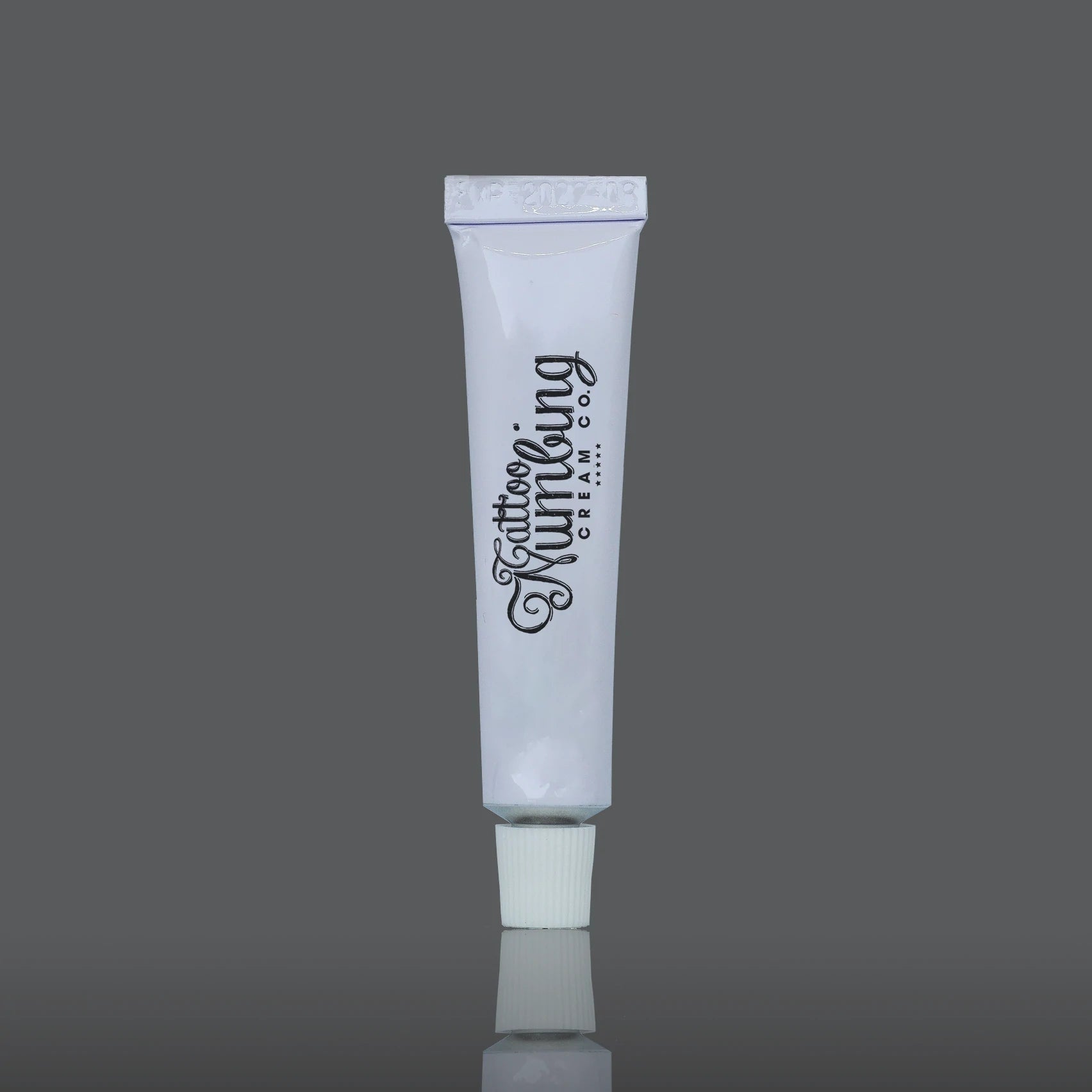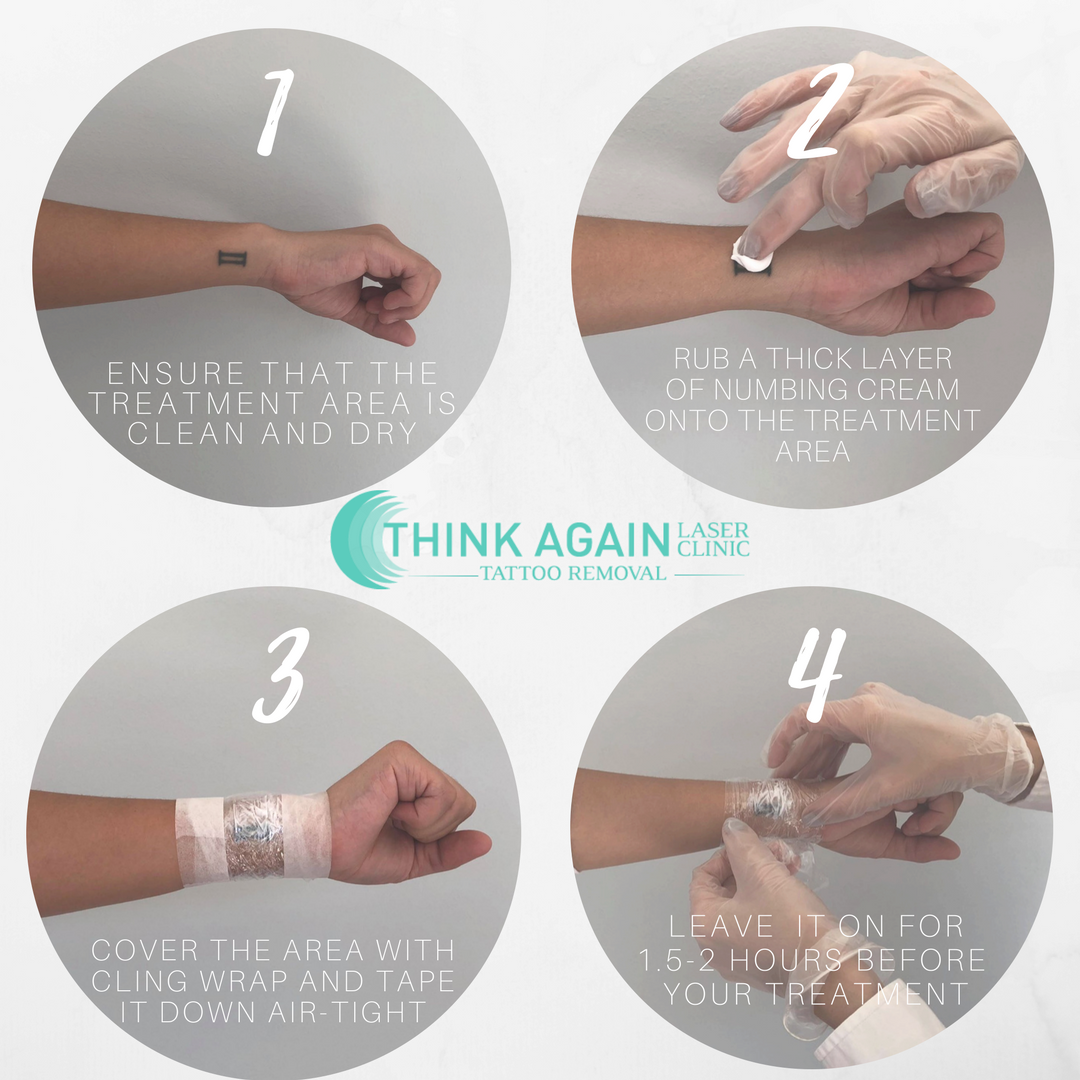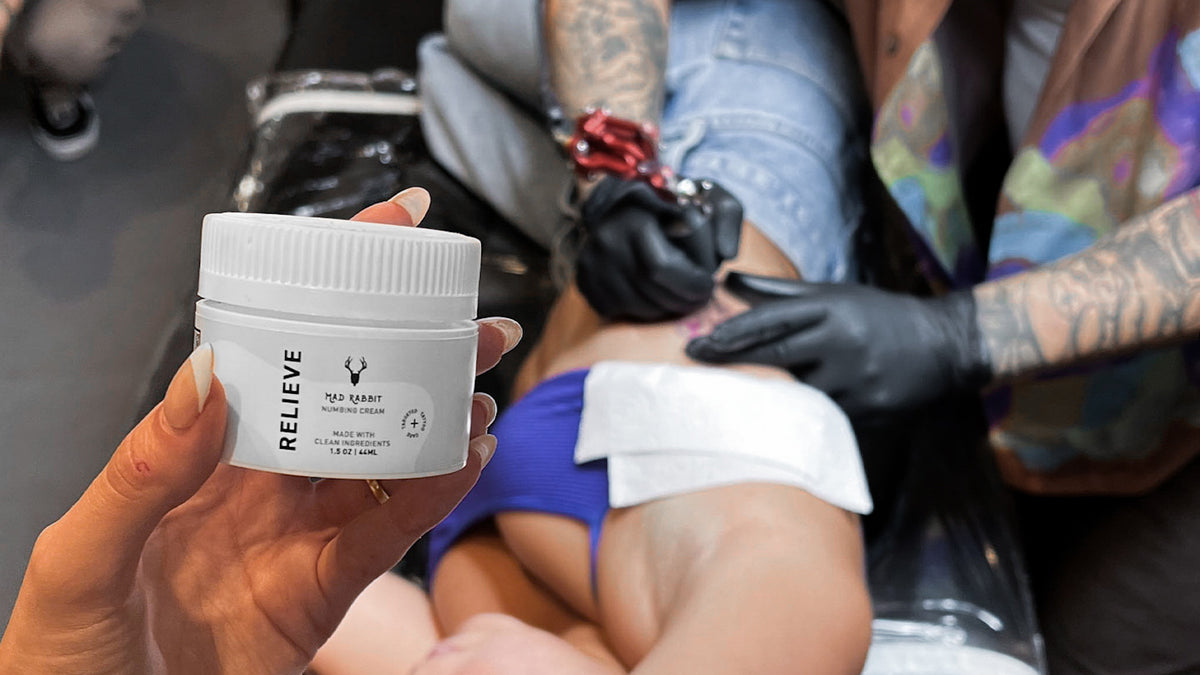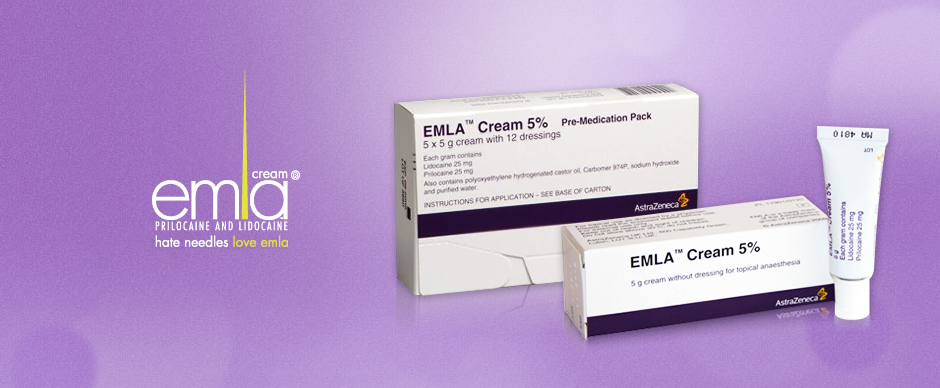How Long Does Numbing Cream Last?
Have you ever wondered how long the effects of numbing cream actually last? Whether you're preparing for a medical procedure or trying to minimize discomfort during a tattoo session, the duration of its numbing power is crucial. In this article, we'll explore the answer to the burning question, "How long does numbing cream last?" Stay tuned as we unravel the mysteries behind this handy topical anesthetic and discover the duration you can expect to feel its numbing effects.

Numbing Cream Last? on this page." src="https://aiwisemind.nyc3.digitaloceanspaces.com/aiwm-buttons/visit-official-website/visit-official-website-deep-orange-45.png">
Factors That Affect the Duration of Numbing Cream
When it comes to using numbing cream, the duration of its effects can vary depending on several factors. Understanding these factors can help you make the most of your numbing cream and ensure optimal pain relief during various procedures. Let's take a closer look at the factors that influence the duration of numbing cream.
Type and Strength of Numbing Cream
The type and strength of the numbing cream you choose play a significant role in determining how long it will last. Different numbing creams contain various active ingredients that have different potencies. Here are some common types of numbing creams and their potential durations:
Topical Anesthetic Creams
Topical anesthetic creams are widely used for numbing purposes. These creams usually contain benzocaine, lidocaine, or tetracaine as their active ingredients. The duration of numbing achieved with topical anesthetic creams can vary, typically lasting anywhere from 30 minutes to two hours.
Over-the-counter Numbing Creams
Over-the-counter numbing creams are readily available at pharmacies or online stores. These creams generally have a lower concentration of active ingredients compared to prescription creams. As a result, their effects may not last as long. On average, over-the-counter numbing creams provide a numbing sensation for about 30 minutes to an hour.
Prescription Numbing Creams
Prescription numbing creams are usually recommended for more intense or invasive procedures. These creams contain higher concentrations of active ingredients, resulting in longer-lasting effects. Prescription numbing creams can provide numbing for up to four hours, allowing for extended pain relief during medical or cosmetic procedures.
Lidocaine-Based Creams
Lidocaine-based creams are commonly used for numbing purposes. They work by blocking nerve signals in the area where the cream is applied. The duration of numbing achieved with lidocaine-based creams can vary, but it typically ranges from 30 minutes to two hours.
Benzocaine-Based Creams
Benzocaine-based creams are another popular choice for numbing. These creams work by numbing the skin's surface, providing temporary relief from pain or discomfort. The duration of numbing with benzocaine-based creams is usually around 30 minutes to an hour.
Tetracaine-Based Creams
Tetracaine-based creams are often used by healthcare professionals for numbing prior to medical procedures. These creams create a deeper level of numbing, making them particularly effective for more invasive procedures. The numbing effects of tetracaine-based creams can last for up to two hours.
Maximum Strength vs. Standard Strength
Some numbing creams come in maximum strength formulations, which contain higher concentrations of active ingredients. These maximum strength creams generally provide longer-lasting numbing effects compared to their standard strength counterparts. If you require extended pain relief, opting for maximum strength numbing cream may be beneficial.
Application Method
The way you apply the numbing cream can also impact its duration and effectiveness. Proper application techniques play a vital role in ensuring maximum absorption and numbing potential. Here are some factors to consider when it comes to the application method:
Applying Cream with Occlusion
One method to enhance the numbing effects of the cream is to use occlusion. Occlusion involves covering the cream with a dressing or plastic wrap. This technique helps create a barrier that traps heat and moisture, enabling better absorption of the numbing cream. By using occlusion, you can extend the duration of the numbing effects.
Application Time
The length of time the cream remains on your skin before the procedure can affect its effectiveness. Allow enough time for the cream to take effect by following the instructions provided. Typically, numbing creams require 20-30 minutes of application time to achieve their full numbing potential.
Applying Multiple Layers
If you find that a single layer of cream is not providing sufficient numbing, you can consider applying multiple layers. However, it's essential to follow the manufacturer's guidelines for the maximum number of layers that can be applied. Layering the cream can increase its potency and extend the duration of numbing.
Removing Excess Cream
After the recommended application time has passed, it's important to remove any excess cream from your skin. Gently wipe off the cream with a clean cloth or tissue. Leaving excess cream on your skin can interfere with the effectiveness of the numbing cream and may not provide the desired numbing duration.
Body Area
The area of the body where the numbing cream is applied can significantly influence how long it lasts. Different body parts have varying levels of blood flow and density of nerves, affecting the absorption and distribution of the numbing cream. Here are some examples of body areas and their potential numbing durations:
Face and Neck
The face and neck area is highly vascularized, leading to faster absorption and distribution of the numbing cream. As a result, the numbing effects on the face and neck may not last as long compared to other body areas. Typically, numbing creams applied to the face and neck can provide relief for approximately 30 minutes to an hour.
Bikini Area
The bikini area is known for its sensitivity, especially during hair removal procedures. Numbing creams applied to this area can help alleviate discomfort, but the duration of numbing tends to be shorter. Expect numbing effects to last around 30 minutes to an hour when applied to the bikini area.
Genital Area
When using numbing cream in the genital area, it is crucial to follow the instructions provided and consult a healthcare professional if necessary. Due to the sensitivity of this area, numbing creams may have a shorter duration, typically lasting around 30 minutes to an hour.
Arms and Legs
The arms and legs have moderate blood flow, allowing for adequate absorption and distribution of the numbing cream. Numbing effects in these areas can last longer compared to more sensitive areas, providing relief for up to 1-2 hours.
Back and Shoulders
The back and shoulder areas generally have a thick skin barrier, which can impact the absorption of the numbing cream. Numbing creams applied to these areas can last for approximately 1-2 hours, depending on the individual and the cream's strength.
Feet and Hands
The feet and hands have a relatively thicker layer of skin compared to other body parts, potentially affecting the duration of numbing. Numbing creams applied to the feet and hands may last for about 1-2 hours.

Individual Sensitivity
Each person's sensitivity to anesthetics can vary, and this can influence the duration of the numbing cream's effects. Factors such as natural tolerance, previous exposure, and skin sensitivities play a role in how well an individual responds to numbing creams.
Natural Tolerance to Anesthetics
Some individuals naturally have a higher tolerance to anesthetics, which may decrease the duration of the numbing effects. If you have a higher pain threshold or are known to have a resistance to anesthesia, the numbing cream's effectiveness may not last as long as expected.
Previous Exposure to Numbing Creams
Having used numbing creams in the past can impact your body's response to them. If you have previously used numbing creams regularly, you may develop a tolerance over time, resulting in shorter-lasting effects. It's essential to be mindful of your previous exposure to numbing creams when considering their duration.
Skin Sensitivities and Allergies
Individuals with sensitive skin or allergies may experience different reactions to numbing creams. Some people may have increased sensitivity to certain ingredients, causing a shorter duration of numbing. If you have known allergies or sensitivities, it's crucial to choose a numbing cream that is suitable for your specific needs.
Skin Condition
The condition of your skin can impact the duration of numbing cream. Here are some factors related to skin condition that can influence the numbing effects:
Intact and Healthy Skin
Numbing creams typically work best on intact and healthy skin. If your skin is in good condition, free from cuts, scrapes, or other forms of damage, the numbing cream can be absorbed more effectively. This, in turn, can lead to longer-lasting numbing effects.
Damaged or Broken Skin
If your skin is damaged, broken, or has open wounds, the effectiveness and duration of numbing cream can be affected. Damaged skin may not absorb the cream as efficiently, resulting in shorter-lasting numbing effects. It's important to ensure your skin is in good condition before applying numbing cream.
Inflammation or Infection
Skin that is inflamed or infected may have impaired blood circulation, affecting the absorption and distribution of the numbing cream. In such cases, the numbing effects may not last as long as expected. It's advisable to consult a healthcare professional if you have inflammation or infection before using numbing cream.
Dry or Oily Skin
The type of skin you have, whether dry or oily, can influence the effectiveness and duration of numbing cream. Dry skin may not absorb the cream as readily, potentially resulting in shorter-lasting numbing effects. Oily skin, on the other hand, can affect the cream's absorption rate, potentially prolonging the numbing duration.

Average Duration of Numbing Cream
While the specific duration of numbing cream varies based on the factors mentioned above, let's take a look at the general categories of numbing creams and their average durations:
Short-acting Numbing Creams
Short-acting numbing creams typically provide temporary relief, lasting anywhere from 30 minutes to an hour. These creams are often used for minor procedures or to alleviate short-term discomfort.
Medium-acting Numbing Creams
Medium-acting numbing creams provide pain relief for a more extended period, generally ranging from 1-2 hours. These creams are commonly used for procedures that require moderate pain management.
Long-acting Numbing Creams
Long-acting numbing creams are designed to provide prolonged pain relief for more intensive procedures. These creams can last up to four hours, allowing for extended comfort during medical or cosmetic treatments.
Effectiveness of Numbing Cream
Apart from the duration of the numbing effects, it's important to consider the overall effectiveness of the numbing cream in achieving pain relief. Here are some key aspects to consider when evaluating the effectiveness of a numbing cream:
Reduced Sensation
The primary purpose of using numbing cream is to reduce or eliminate sensations of pain or discomfort. The effectiveness of the numbing cream can be measured by the extent to which it achieves reduced sensation in the targeted area.
Pain Relief
Numbing creams aim to provide pain relief during various procedures. The effectiveness of a numbing cream can be determined by how effectively it minimizes or eliminates pain during a specific treatment.
Duration of Pain Relief
The duration of pain relief achieved with a numbing cream is directly related to its overall effectiveness. A longer-lasting numbing cream can provide extended pain relief, ensuring a more comfortable experience during medical or cosmetic procedures.

Tips for Maximizing the Duration of Numbing Cream
To maximize the duration of your numbing cream and ensure optimal pain relief, consider the following tips:
Follow Instructions Carefully
Always read and follow the instructions provided with your numbing cream. Pay attention to the recommended application time, layering instructions, and any additional precautions or guidelines mentioned.
Apply Cream in Advance
To allow the numbing cream sufficient time to take effect, apply it in advance as directed. Applying the cream too close to the procedure may result in incomplete numbing or shorter duration of effect.
Cover with Occlusive Dressing
Consider using occlusion as a method to enhance the numbing effects of the cream. Covering the cream with an occlusive dressing can trap heat and moisture, facilitating better absorption and prolonging the duration of numbing.
Avoid Rubbing or Touching
Once the numbing cream is applied, avoid rubbing, touching, or disturbing the area unnecessarily. Excessive movement or rubbing can interfere with the absorption and distribution of the cream, potentially reducing its effectiveness and duration.
Conclusion
The duration of numbing cream can vary based on factors such as type and strength of the cream, application method, body area, individual sensitivity, and skin condition. By understanding these factors and following the recommended guidelines, you can make informed decisions and maximize the effectiveness and duration of your numbing cream. Remember to always consult with a healthcare professional or follow the instructions provided by the numbing cream manufacturer for best results.
Numbing Cream Last? in detail." title="See the How Long Does Numbing Cream Last? in detail." src="https://aiwisemind.nyc3.digitaloceanspaces.com/aiwm-buttons/visit-official-website/visit-official-website-deep-orange-45.png">





